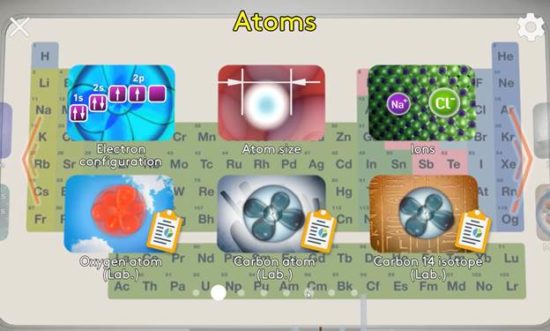ZSpace continues growth in the education segment with strong participation from schools and application providers.

ZSpace was founded in 2001 and immediately caused a stir as one of the first companies to deliver XR in supremely practical applications relying on 3D visualization. ZSpace now offers three models: a laptop, and two AIOs (all-in-ones), all of which come with 3D glasses and a stylus. The secret of ZSpace’s technology is the tracking built into the display. The 3D glasses put the model in front of the display, sensors track the stylus and the glasses allowing users to turn their heads to look around the models and manipulate them with the stylus.
From the very start, zSpace has been active in co-development with partners. An early example is Dassault’s demo of a human heart, which was made to showcase the ongoing Living Heart Project by Dassault’s analysis and simulation group, Simulia. More recently, the company has pivoted to the education market and has been working with educators to develop applications as well as curricula and instruction guides. There is a wealth of material at https://zspace.com/edu/.

At the Future of Education Technology Conference (FETC) that just happened in Orlando, Florida, zSpace and MEL Science, a London-based company developing VR education tools, announced their partnership to bring MEL Science applications to the ZSpace platform.
Their collaboration has resulted in the development of 10 activities for middle school and 39 activities for high school. The content includes lessons and makerspace labs that give students the opportunity to play with the content on their own in a creative way and also move through hands-on exercises.
The MEL Chemistry content lets students use AR and VR to experience being inside substances, mixtures, and atoms. It explains chemistry concepts including atoms, molecules, the periodic table, gas laws, and isomerism.
zSpace CEO Paul Kellenberger, says that enabling students to experiment and explore real scenarios is more effective as an add-on to text books and instruction. He believes the work they’re doing with companies like MEL Science “delivers exciting lessons, emulations, and experiments that will inspire future chemists and scientists.”

What do we think?
zSpace is building their market through their own development and partnerships. The marriage of digital technology and education is an ongoing and committed relationship, but it can be a tough go when education has to fight for funding. In the US, funding is tied to property taxes meaning the rich kids often get more resources than kids in less affluent neighborhoods.
However, there has been enthusiasm for computers in the classroom, which has not always turned out so well. Teachers have complained that they can’t get funding for art supplies but they’ve got two unused computers in their classrooms. Computers have been sold as a panacea in the classroom since the 90s, but multiple studies have found that the computer alone makes little difference in the classroom unless it’s used for specific educational goals. The work zSpace and its partners are doing offers the missing ingredient by giving teachers resources to teach in an engaging way with structured content and built-in play and experimentation.
ZSpace has also done work to get their tools and equipment approved by federal, state, and local funding sources so they can help customers get the necessary funding. In a recent announcement, zSpace and that Chattahoochee Valley Community College (CVCC) in Phenix City Alabama announced that the college has two new computer labs equipped with zSpace computers. The college received a $250,00 grant from the Alabama Community College System and worked with Vizitech Labs to build it. The CVCC is using the zSpace labs for its health services program, biology, chemistry, and physical sciences courses.
And, here’s an interesting twist: the K-12 schools in Phenix City are already using zSpace in their curriculum. Dr. Chantae Calhoun, Dean of Instruction at CVCC, says in a story in Business Alabama, “with Phenix City Schools already using this technology, it was essential that CVCC had zSpace to continue the interactive learning experience that these students have experienced in their secondary education.”
There was no doubt ZSpace had great technology when it arrived on the scene at the turn of the century but markets don’t make themselves. ZSpace, with its network of application developers and value-added retailers (VARs) and system integrators (SIs), is building a market for its technology. As Kellengerger notes that students working with the MEL Science applications could go on to become scientists and chemists, and they might bring zSpace to their professional work as well.





